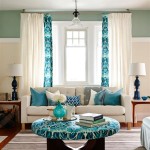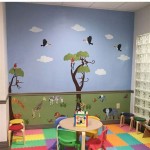How to Make Home Decor Items
Creating personalized home decor allows for unique self-expression and can be a rewarding endeavor. This article outlines various methods and materials for crafting decorative items, offering inspiration and practical guidance for transforming a living space.
Working with Textiles
Textiles offer a versatile medium for home decor projects. Simple sewing skills can yield impressive results. Consider crafting cushion covers from interesting fabrics like velvet, linen, or patterned cotton. These can easily update a sofa or armchair. Wall hangings, incorporating macrame, weaving, or embroidery, add texture and visual interest to a room. Larger projects, such as quilted throws or patterned curtains, can significantly impact a room's aesthetic. Experimenting with different fabric combinations and embellishments like tassels, beads, or ribbons allows for further personalization.
Upcycling Existing Items
Repurposing existing items is a cost-effective and sustainable approach to home decor. Old picture frames can be repainted and used to display pressed flowers or patterned paper. Glass jars can be transformed into decorative storage containers or candle holders with paint, decoupage, or etching techniques. Unused furniture, like a small ladder, can be repurposed as a bookshelf or plant stand with a fresh coat of paint and strategic placement. This approach encourages creative thinking and resourcefulness, resulting in unique and personalized decor.
Utilizing Natural Materials
Incorporating natural materials brings an organic and calming element to home decor. Driftwood, collected responsibly from beaches, can be used to create sculptural pieces, wall art, or incorporated into furniture. Dried flowers and branches can be arranged in vases or incorporated into wreaths and other decorative arrangements. Smooth stones and shells can be used to create decorative bowls, mosaics, or simply displayed in glass containers. These natural elements add texture and a touch of the outdoors to any space.
Exploring Paper Crafts
Paper offers a surprisingly diverse range of crafting possibilities. Origami can be used to create intricate decorations and ornaments. Paper mache, a technique using paper pulp, allows for the creation of custom sculptures and decorative bowls. Quilling, the art of rolling and shaping thin strips of paper, can produce intricate designs for wall art or greeting cards. Even simple paper cutouts, layered and framed, can create striking visual effects. These paper crafts are often budget-friendly and require minimal tools.
Working with Wood
Woodworking projects can create substantial and long-lasting home decor pieces. Simple shelves, crafted from reclaimed wood or purchased lumber, add storage and display space. Small wooden boxes, decorated with paint or decoupage, can be used to store jewelry or other small items. More advanced woodworkers can explore creating picture frames, decorative trays, or even small furniture pieces. Safety precautions are crucial when working with wood, including proper ventilation and the use of appropriate safety equipment.
Creating with Clay
Clay offers a malleable medium for creating unique home decor items. Air-dry clay is accessible for beginners and requires no kiln. It can be molded, sculpted, and painted to create decorative bowls, figurines, or wall hangings. Polymer clay provides a durable option for jewelry, ornaments, and other small decorative items. Pottery, requiring a kiln and specialized equipment, allows for the creation of functional and decorative ceramics. Experimenting with different clay types and glazing techniques provides endless creative possibilities.
Utilizing Concrete and Plaster
Concrete and plaster offer a modern and industrial aesthetic for home decor projects. Concrete can be used to create planters, candle holders, and even small furniture pieces. Plaster is ideal for creating decorative wall panels, sculptures, and decorative moldings. Working with these materials requires careful preparation and attention to safety, including wearing gloves and a dust mask. The finished products can be painted or left with their natural finish for a minimalist look.
Incorporating Lighting
Lighting plays a significant role in creating ambiance and highlighting decorative elements. Creating custom lampshades using fabric, paper, or other materials can personalize a space. String lights, strategically placed around a room or incorporated into decorative arrangements, can add a warm and inviting glow. Repurposing old lanterns or mason jars into pendant lights can create a unique and cost-effective lighting solution. Always prioritize safety when working with electrical components.
Experimenting with Paint and Finishes
Paint and finishes can transform existing items and add a personal touch to home decor. Techniques like stenciling, sponging, and distressing can create unique patterns and textures on furniture, walls, and other surfaces. Specialty paints, such as chalkboard paint or metallic finishes, offer additional creative options. Proper surface preparation and the use of appropriate primers ensure a professional and long-lasting finish.

15 Diy Home Decor Items You Can Make And Garden

Your Complete Guide To Diy Home Decor Ideas Photojaanic

50 Fun And Easy Diy Room Decor Ideas That Won T Break The Bank

Top 20 Home Decor Ideas You Can Easily Diy Room

Your Complete Guide To Diy Home Decor Ideas Photojaanic

50 Fun And Easy Diy Room Decor Ideas That Won T Break The Bank

36 Diy Home Decor Projects Easy Craft Ideas For Decorating

36 Easy And Diy Home Decor Projects

9 Diy Decor Ideas You Can Make From Things Around The House Brightly

5 Home Decor Items You Can Make With Paper Canon U S A Inc
Related Posts







